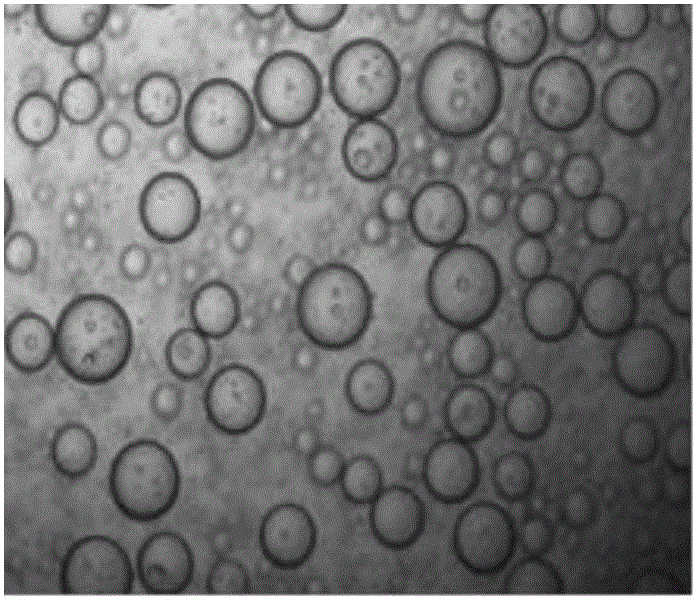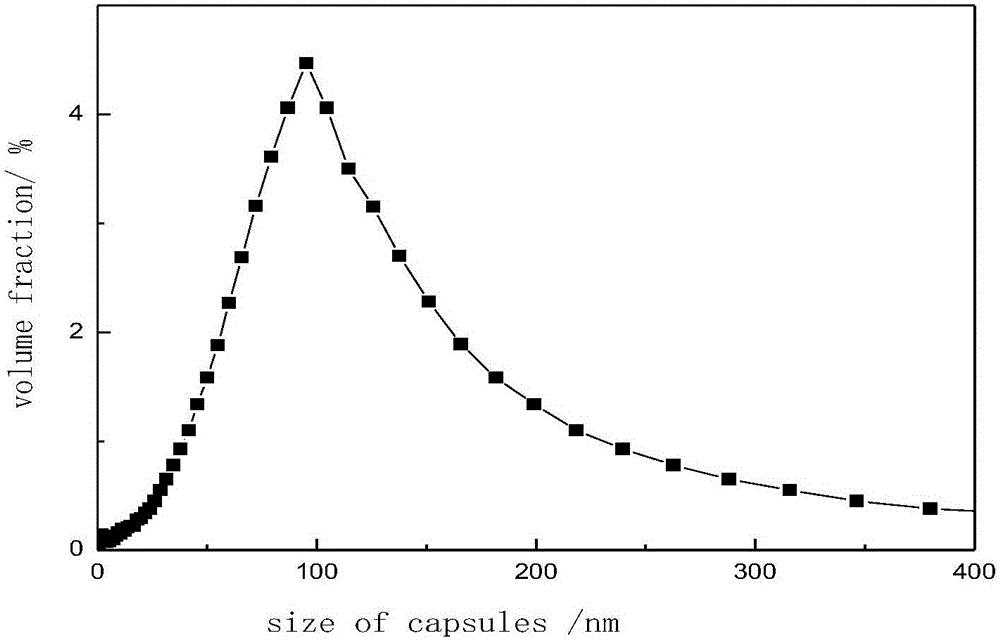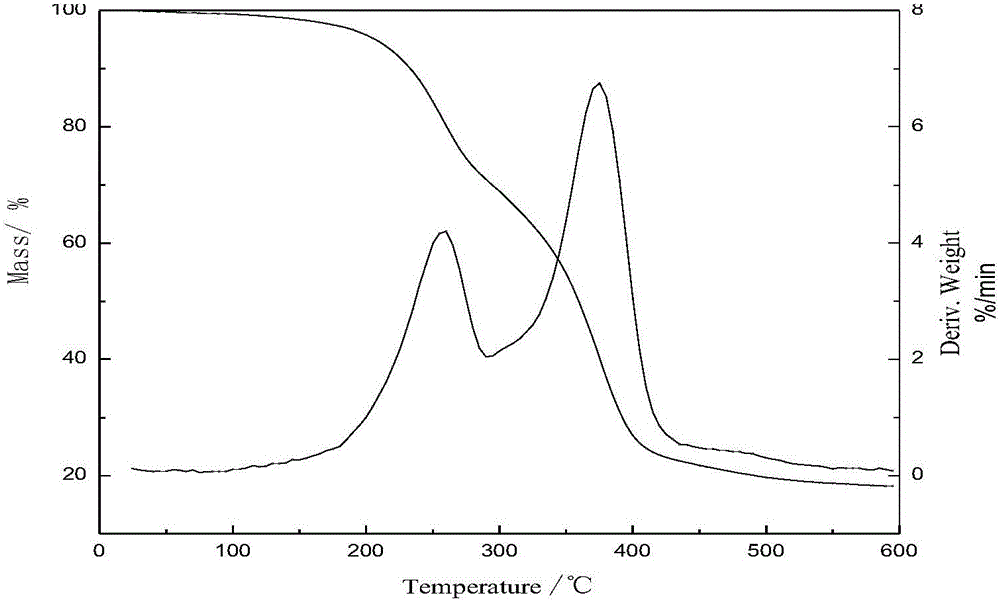Preparation method of self-repair nanocapsule-thermosetting-resin-base composite material
A technology of nanocapsules and composite materials, which is applied in the field of preparation of self-healing nanocapsules/thermosetting resin-based composite materials, which can solve the problems of performance degradation and poor compatibility of thermosetting resin-based composite materials, and achieve good compatibility and dispersion Improvement, small size effect
- Summary
- Abstract
- Description
- Claims
- Application Information
AI Technical Summary
Problems solved by technology
Method used
Image
Examples
preparation example Construction
[0031] A self-healing nanocapsule / thermosetting resin-based composite material of the present invention is prepared by the following steps:
[0032] 1) Add urea and formaldehyde into a three-necked flask with a molar ratio of 1:1 to 1:3 and stir, then add urea in batches to reduce the amount of free formaldehyde to form a urea-formaldehyde solution, and then add urea-formaldehyde at a mass ratio of 0 %~50% of melamine. Adjust the pH value to 8-9 with an alkali-adjusting agent, slowly raise the temperature to 60-80°C, and react in a water bath at a constant temperature of 60-80°C for 30-60 minutes. Check the end point of the reaction, stop heating and wait until the temperature drops to room temperature to obtain a transparent and viscous product. Polyurea-formaldehyde prepolymer (PUF prepolymer) or melamine-urea formaldehyde prepolymer (MUF prepolymer); wherein, the wall material raw materials are urea, formaldehyde and melamine;
[0033] 2) Take 8.0-20.0g epoxy resin as the ...
Embodiment 1
[0045] 1) Add 2.0 g of urea and 5.4 g of formaldehyde solution (37 wt%) into a three-necked flask and stir. Use triethanolamine to adjust the pH value to 9, slowly raise the temperature to 70°C, react at a constant temperature in a water bath for 30 minutes, detect the end point of the reaction, stop heating until the temperature drops to room temperature, and prepare a transparent and viscous urea-formaldehyde prepolymer (PUF prepolymer) );
[0046] 2) Take 8.0 g of bisphenol F glycidyl ether type epoxy resin as the core material, 2.0 g of 1-butyl glycidyl ether, 1.8 g of sodium dodecylbenzene sulfonate as emulsifier, and 0.5 g of n-octanol as disinfectant Foaming agent, add 100mL deionized water, stir at 600rpm for 1.5h to form an O / W emulsion. Stir with a high-speed mixer at 900rpm for 15min, then use an ultrasonic cell pulverizer to sonicate for 8min at a power of 1500W, and then sonicate at a power of 300W for 4min to form a fine emulsion;
[0047] 3) Pour the PUF prepo...
Embodiment 2
[0051] 1) Add 2.0 g of urea and 2.7 g of formaldehyde solution (37 wt%) into a three-necked flask and stir, then add 1.5 g of melamine. Use triethanolamine to adjust the pH value to 8, slowly heat up to 60°C, react at a constant temperature in a water bath for 30 minutes, detect the end point of the reaction, stop heating and wait until the temperature drops to room temperature to prepare a transparent and viscous melamine-urea formaldehyde prepolymer (MUF prepolymer) polymer);
[0052] 2) Take bisphenol A glycidyl ether type epoxy resin 11.3g as core material, 1-butyl glycidyl ether 1.5g, 0.5g sodium dodecylbenzenesulfonate as emulsifier, n-octanol 0.05g as disinfectant Foaming agent, add 100mL deionized water, and stir at 600rpm for 1h to form an O / W emulsion. Stir with a high-speed mixer at 800rpm for 10min, then use an ultrasonic cell pulverizer to sonicate for 6min at a power of 1000W, and sonicate for 1min at a power of 200W to form a fine emulsion;
[0053] 3) Pour th...
PUM
| Property | Measurement | Unit |
|---|---|---|
| thermal resistance | aaaaa | aaaaa |
| particle size | aaaaa | aaaaa |
Abstract
Description
Claims
Application Information
 Login to View More
Login to View More - R&D
- Intellectual Property
- Life Sciences
- Materials
- Tech Scout
- Unparalleled Data Quality
- Higher Quality Content
- 60% Fewer Hallucinations
Browse by: Latest US Patents, China's latest patents, Technical Efficacy Thesaurus, Application Domain, Technology Topic, Popular Technical Reports.
© 2025 PatSnap. All rights reserved.Legal|Privacy policy|Modern Slavery Act Transparency Statement|Sitemap|About US| Contact US: help@patsnap.com



